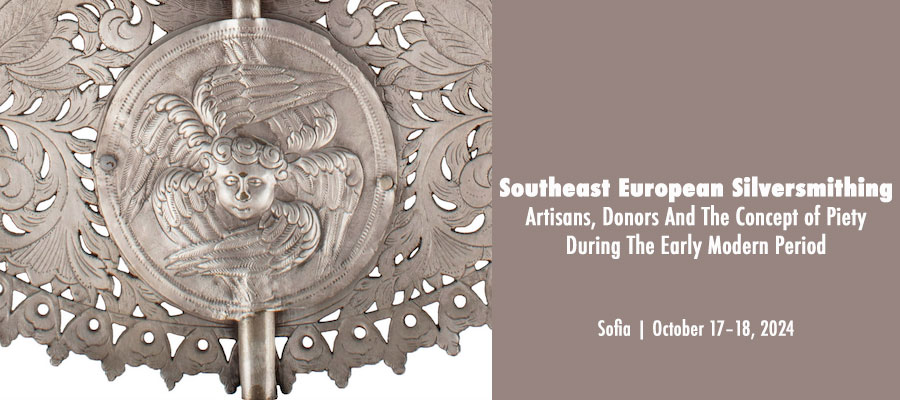Southeast European Silversmithing: Artisans, Donors And The Concept Of Piety During The Early Modern Period, Sofia, October 17–18, 2024
The Institute of Art Studies, Bulgarian Academy of Sciences, invites participation in the international conference "Southeast European Silversmithing: Artisans, Donors, and the Concept of Piety During the Early Modern Period."
Commissioning and donation of liturgical objects is among the most vivid manifestations of religiosity and an expression of pious devotion to God. Through the centuries, gradually, more sacred silver objects and various sources of information about them reached us which gave the art historians a unique opportunity to examine and understand the impact of material culture in shaping the religious life of Christians. Despite the increasing number of studies dedicated to the historical, technological, iconographical, and functional aspects of liturgical objects which undoubtedly are giving us a much better understanding of them, we still know comparatively little about the silversmiths, the organisation of their profession and the artistic process, the donors and the circumstances of their commissions. In other words, we, as researchers in that field, often struggle to identify all the stipulations that resulted in the emergence of church utensils made of precious metals.
The conference will focus on the issues regarding the manufacturing and circulation of liturgical objects as well as their role in the construction of the pious image of the believers in Southeast Europe during the early modern period. We believe that this research area offers a good potential for academic discussion and interdisciplinary investigations combining art historical methods with critical analysis of a variety of written sources, archival documentation, and contemporary approaches in humanitarian studies. We welcome proposals for 20-minute papers exploring material across the topic that deal with either case studies or broader methodological questions. Papers that take an interdisciplinary approach, breaking the traditional boundaries between art history and history, especially economic history and the history of guilds, and museum studies, are particularly welcome. Topics of interest may include, but are not limited to:
- Commission and donation of liturgical objects.
- Objects reflecting personal and collective piety through the mechanisms of production and donorship.
- Social status of donors and silversmiths within the society and their “biographies”.
- Production of liturgical objects, issues of artistic process and technological peculiarities.
- Silversmiths’ guilds, professional organization, state regulations and control on precious metals.
- Interaction of silversmiths’ guild with local Church authorities and other institutions. Manufacturing and trading liturgical objects.
- Circulation of liturgical objects and mobility of silversmiths.
- Provenance and hallmarks on liturgical objects, style, attribution and authorship.
- The „afterlife“ of profane silver as liturgical objects in the secondary use, transformation and utilisation of exotic materials for sacred purposes.
- Liturgical silver as a deposit for the state economy in peace and war.
- Liturgical objects in written sources such as various types of chronicles, inventories, wills, travel accounts, memoirs, marginal notes, etc.
- Inscriptions on liturgical objects and their interpretation.
Academic research on wider aspects of the topic such as exploring the destiny of liturgical objects through time, their later “life”, and changes in form and function, the place of church utensils and silversmithing in art historiography, archival documents and photographs, and museum and private collections, will also be considered.
We are inviting papers in all relevant disciplines and scholars working on similar topics in areas other than art history are encouraged to apply.
The conference’s working languages will be English and Bulgarian.
